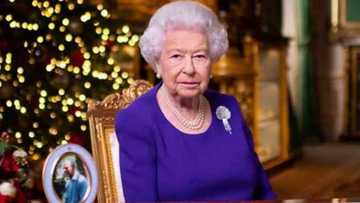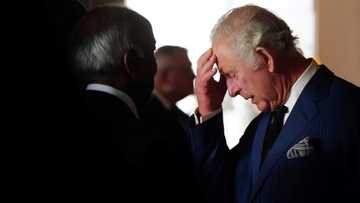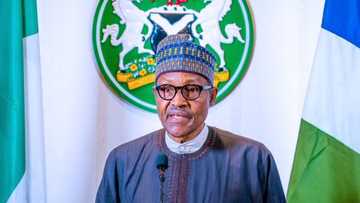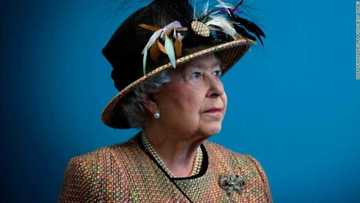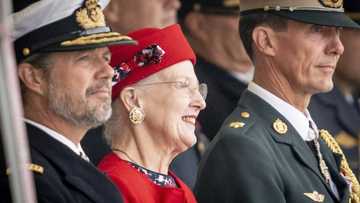From Victoria to Elizabeth II: Why Queen of England Has a Throne in Nigeria
- Queen Elizabeth II of England has passed on after being placed under medical supervision at the request of her doctors
- Nigerians are not left out as the world mourns the longest reigning monarch who died at the ripe age of 96
- This report narrates an interesting myth surrounding the Queen Victoria of England, Queen Elizabeth II's predecessor, and why she still has a throne in Nigeria
Nigerians join the rest of the world to mourn the passing of Her Majesty Queen Elizabeth II of England who died at the age of 96.
Being its former colony, Nigeria has a close tie with the United Kingdom, cutting across culture, trade and politics.
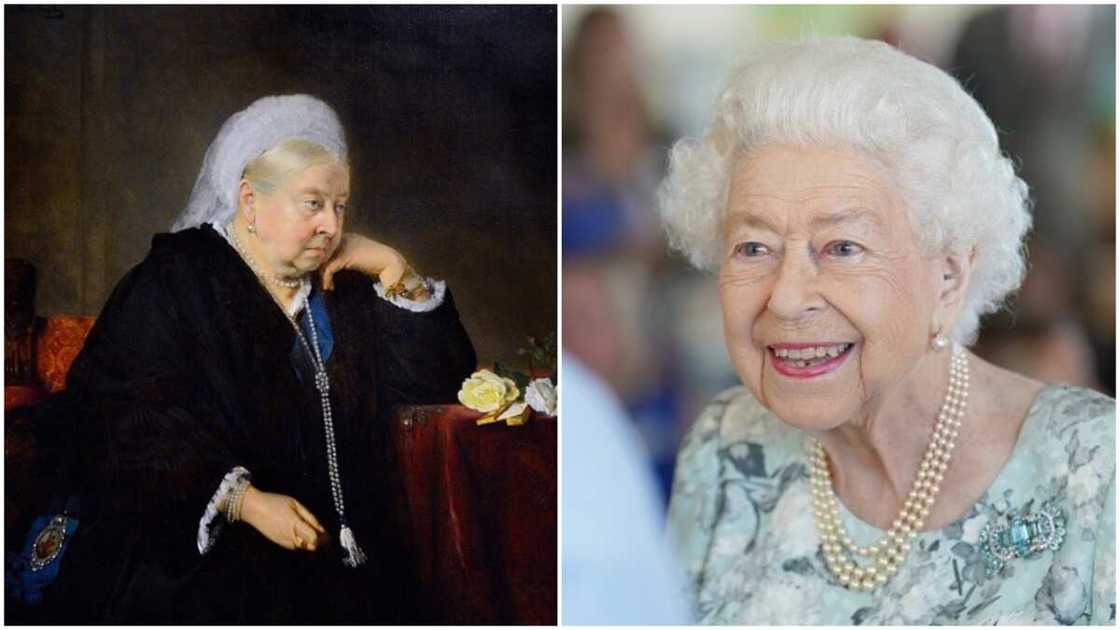
Source: Getty Images
The British monarchy, in particular, has a place in the history of Nigeria. For Queen Elizabeth II, reports indicate that she visited Nigeria twice.
Her first visit to Nigeria was in 1956 before the most populous African nation became independent.
PAY ATTENTION: Join Legit.ng Telegram channel! Never miss important updates!
The second was in 2003 under the Obasanjo administration; her main purpose for the visit, it was learnt, was tо аttеnd thе Commonwealth Hеаdѕ of Government Mееtіng held during that period.
However, well before Queen Elizabeth II, there was Queen Victoria of England around whom there is an interesting myth among the Efik people of southern Nigeria.
As a result of the myth, a throne is reserved for the Queen of England in the West African state, up till today.
The myth, according to Nigerian journalist and novelist Adaobi Tricia Nwaubani in a report by BBC, is that one of the Efik's 19th Century kings was married to Queen Victoria of England, one of the predecessors of Queen Elizabeth II.
Former governor of Cross River state, Donald Duke, said he first heard about the myth in 2001 "when he was going through the museum and saw this very interesting correspondence between Queen Victoria and King Eyamba."
"I thought it was important that we document our history, so we did a lot of research," the former governor wa quoted as saying.
King Eyamba V and King Eyo Honesty II: The two monarch ruling the Efik people
King Eyamba V was one of two monarchs based in the coastal town of Calabar, then made up of two sovereign states.
King Eyo Honesty II of Creek Town presided over the affairs of the other sovereign state also dominated by the Efik ethnic group in the mid-19th Century,
Due to their location along the coast, the Efik dominated the slave trade.
"They acted as middlemen between the African traders from the hinterlands and the white merchants on ships mostly from English cities such as Liverpool and Bristol.
"They negotiated prices for slaves, then collected royalties from both the sellers and buyers," the report stated.
As the slave trade boomed, the "kings became very wealthy" "families became prominent", controlling "the largest trough of slaves coming out of Africa," according to Ex-Governor Duke.
Queen Victoria moves to stop slave trade in Calabar
However, decades after the slave trade was abolished in Britain in 1807, human cargo was still transported to other countries through Calabar.
In a bid to put a final stop to slave trading, Queen Victoria took steps to have the kings of Calabar on her side.
"She wrote a letter asking that they stop trading in people and start trading in spices, palm oil, glassware, and other things," former Governor Duke said.
Queen Victoria's letter to King Eyamba: Where the myth begins
Queen Victoria, in her letter to King Eyamba, allegedly offered inducements that included protection to the Calabar monarch and his people.
She then signed off the letter as "Queen Victoria, The Queen of England", which a local interpreter incorrectly relayed as "Queen Victoria, The Queen of All White People".
According to the myth, King Eyamba decided that if he was going to accept protection from a woman, that is Queen Victoria, then they had to get married.
He told the Queen so in his written reply, which he also signed off as, "King Eyamba, the King of All Black Men".
"He (King Eyamba) wrote to the Queen and said he wanted to marry her so that the two of them would rule the world," Charles Effiong Offiong-Obo, an Efik chief was quoted as saying.
The myth has it that Queen Victoria simply acknowledged King Eyamba's letter and did not explicitly decline his "marriage" offer.
"She acknowledged the king's letter and said she looked forward to having good trade relations with him," Offiong-Obo said.
The Queen's letter in response to King Eyamba was accompanied by some gifts, including a royal cape, a sword, and a Bible.
However, the simple goodwill gesture by the Queen was interpreted by King Eyamba as acceptance of his marriage offer. So, the Efik people began to believe that their king had married the Queen of England.
Sometime in the 20th Century, the Efik people reported agreed to have only one monarch, known as an Obong (of Calabar. Thus, the thrones once occupied by Kings Eyamba and Honesty were merged.
In-law is in town: Prince Michael of Kent's 2017 visit to Calabar
In 2017, Prince Michael of Kent paid a brief private visit to Calabar. However, the reigning Obong, Edidem Ekpo Okon Abasi Otu V, got to know that he was in town.
Prince Michael, being a member of the British royal family and first cousin of Queen Elizabeth II, was considered an in-law by the Obong, based on thy myth that King Eyamba "married" Queen Victoria.
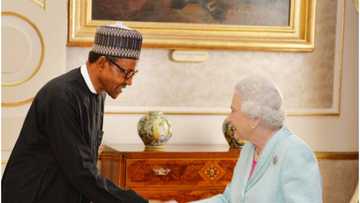
Read also
Queen Elizabeth: Top Nigerian University to be renamed after late UK monarch? Buhari gets call
The Calabar monarch feted the prince and made him a chief with the title Ada Idagha Ke Efik Eburutu, meaning "A person of honour and high standing in the Efik Eburutu Kingdom".
A grand ceremony to confer the title on Prince Michael took place at the Obong's palace.
"During Prince Michael's visit, at every opportunity, they reminded him that he was their in-law. Even at the ceremony, they told that story again," said Barbara Etim James, an obong-awan, or queen, among the Efik who planned the chieftaincy ceremony.
"Prince Michael was delighted to hear the historical ties between the Efik and British royalty and was honoured to be deepening those ties with his Efik chieftaincy," she added.
The Obong of Calabar has two thrones: One for obong, the other for Queen Victoria
In line with the tradition that began following King Eyamba's "marriage" to Queen Victoria, the coronation of the Obong of Calabar still takes place in two phases, according to the BBC report.
After the traditional rites are concluded in the community, the coronation ceremony continues in a Presbyterian Church (formerly the Church of Scotland), where the obong wears a crown and cape custom-made for the occasion in England.
Legit.ng gathers that two thrones are set side by side and he sits on one, while the second is left empty for the absent Queen of England (or a Bible placed on it).
The king's wife known wife sits behind him.
Queen Elizabeth calls off meeting
Earlier, Legit.ng reported that Queen Elizabeth II postponed a meeting of her Privy Council advisory group after doctors advised her to rest, Buckingham Palace said Wednesday, the day after she appointed Liz Truss as Britain's new prime minister.
"After a full day yesterday, Her Majesty has this afternoon accepted doctors' advice to rest," the palace said in a statement released before the monarch's death.
"This means that the Privy Council meeting that had been due to take place this evening will be rearranged."
Source: Legit.ng



